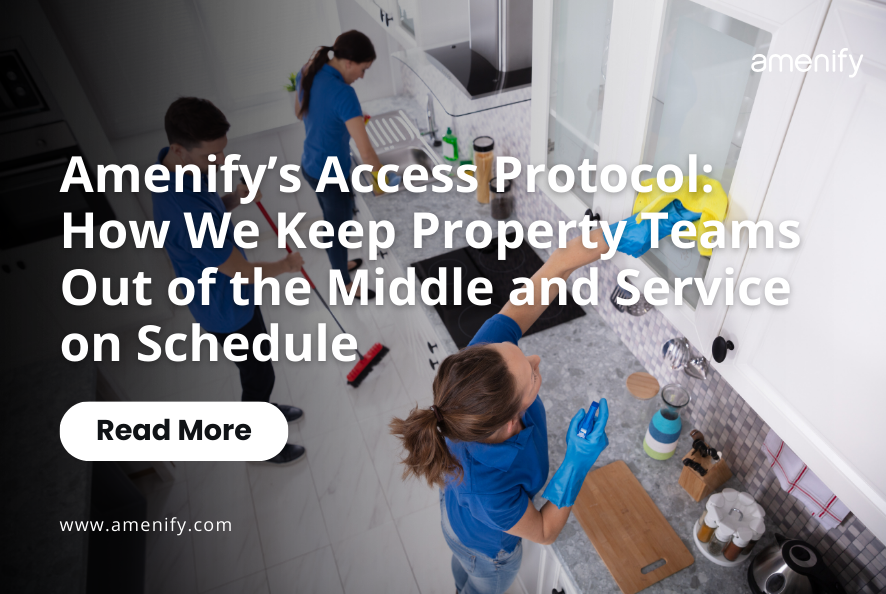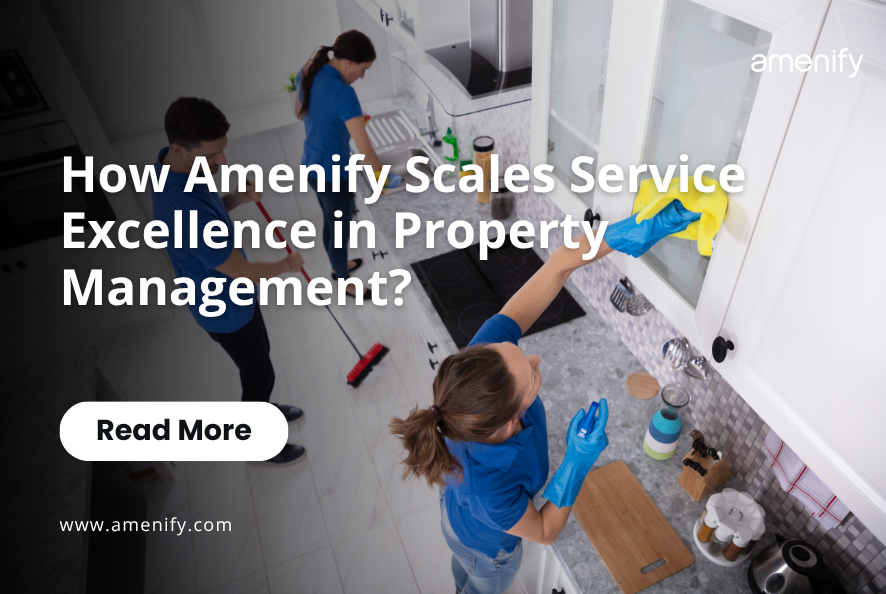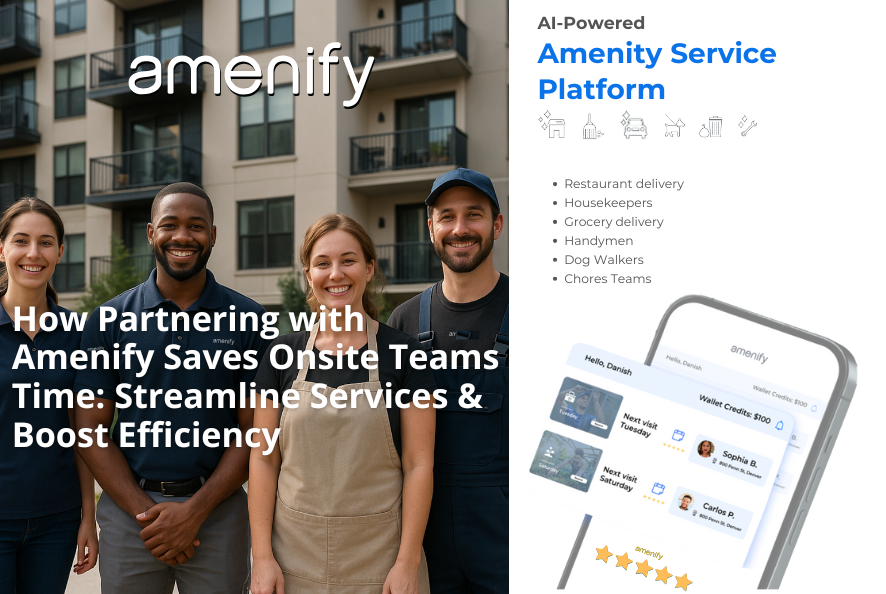Understanding Resident Service Pricing: Is It a Win for Your Residents?
When it comes to property management, the ultimate goal is always to drive both resident satisfaction and revenue. One of the most effective ways to accomplish both is by offering on-demand resident services. But here’s the question property managers need to ask: Is the pricing on these services fair? And, more importantly, is it a good deal for your residents?
Why it’s crucial for property managers to get it right, and how it can be a win-win for both residents and the property’s financial health.
What Exactly Is Resident Service Pricing?
At the core of it, Resident Service pricing is about convenience. Whether it’s food delivery, grocery shopping, on-demand maintenance, or cleaning, the aim is to provide your residents with seamless access to services that make their lives easier. Residents pay for these services as they need them, either through a pay-per-use model or a subscription-based package.
Here’s a breakdown of how these models typically work:
Pay-Per-Service Pricing: This is the most common approach, especially when it comes to specific services like a handyman or food delivery. Residents pay only when they use a service, and each service has a set price.
Subscription-Based Pricing: Some properties offer a flat monthly fee that gives residents access to a variety of services. This model helps residents budget their living expenses better and gives them peace of mind knowing they can use these services without worrying about additional costs each time.
What makes pricing tricky is that local labor costs and market conditions impact the pricing of these services. For instance, prices for food delivery or handyman services will differ dramatically between a metropolitan area like San Francisco versus a smaller city like Peachtree, Georgia. The goal is to find a balance: competitive pricing that’s fair to residents while still generating revenue for the property.
Amenify, a platform that helps property managers offer resident services, provides a great example of how this pricing works. The company uses advanced technology to track market prices and integrate with services. They pull data to find the lowest available price, ensuring your residents are getting the best deal possible, even with added service fees.
Is This a Good Deal for My Residents?
The short answer: It can be if the service is priced right and the quality of service meets or exceeds resident expectations.
Residents have grown accustomed to paying for on-demand services, especially as our lifestyles become increasingly busy. According to a recent study by Statista, the number of people using on-demand services like food delivery, home maintenance, and pet services has grown steadily over the past few years. In fact, over 60 million people in the U.S. now use at least one on-demand service regularly—this includes services like food delivery, home cleaning, and even healthcare.
These services are seen as an essential part of modern living, and the convenience factor is significant. For property managers, this means that offering these services on-site is a win-win: you can improve the resident experience while also tapping into a profitable service model.
However, just offering services isn’t enough. Pricing needs to be competitive and fair to ensure residents are getting value. If your pricing isn’t aligned with market norms, you risk losing their trust—or worse, their business.
How Amenify’s Model Works to Keep Pricing Competitive?
Pricing for services like food delivery can fluctuate based on platform fees and demand, which is why Amenify uses integrated technology to find the most competitive prices. If your resident orders a meal via DoorDash, for instance, the platform will pull the price from the platform offering the lowest fees, ensuring the most cost-effective option for the resident.
Let’s put it into perspective: consider a McDonald's 10-piece meal. On different delivery platforms, the same meal can vary in cost based on service fees, delivery charges, and even platform-specific discounts. Amenify helps mitigate these costs by offering a real-time comparison, ensuring that the resident pays the lowest possible price. The transparency in pricing helps foster trust, as residents don’t feel like they’re being overcharged for convenience.
Facts and Trends: The Growing Demand for On-Demand Services
Most Requested Helpful Services
Here’s where it gets interesting: On-demand services have seen an explosive rise in the last few years, especially as technology and convenience have become central to consumer behavior. According to McKinsey & Company, the on-demand economy has grown by 20-25% annually over the last three years. The pandemic accelerated this growth, with millions of Americans turning to services like food delivery, grocery shopping, and cleaning to navigate lockdowns and social distancing.
Some key insights:
60 million U.S. residents (roughly 20% of the population) use on-demand services like food delivery or home repair on a regular basis.
The U.S. food delivery market alone was valued at $26.5 billion in 2023, and it’s projected to grow at a 15% annual rate.
On-demand home services like maintenance, cleaning, and repairs grew by more than 30% from 2021 to 2023.
82% of consumers say they’d pay more for a service if it’s convenient and of high quality.
With demand for these services growing at such a rapid rate, property managers who can offer competitive and affordable options for residents are positioned for long-term success. By incorporating these services into your property’s offerings, you're tapping into a proven revenue stream and providing a service residents will appreciate.
The Long-Term Impact on Your Property!
It not only keeps residents happy, but it also creates a consistent revenue stream for property managers. In fact, according to NMHC (National Multifamily Housing Council), properties that offer amenities such as concierge services, package management, and on-demand offerings tend to see up to 10% higher rents.
If residents are consistently using services like food delivery, cleaning, or maintenance, it creates a steady influx of revenue. Add in the subscription model for bundled services, and you create a predictable cash flow for your property. This also boosts resident retention rates, which is critical in a market where turnover can be costly.
By offering these services at fair, competitive prices, property managers position themselves as delivering real value to residents, making it less likely they’ll want to leave for another property that offers the same services at a higher price.





































